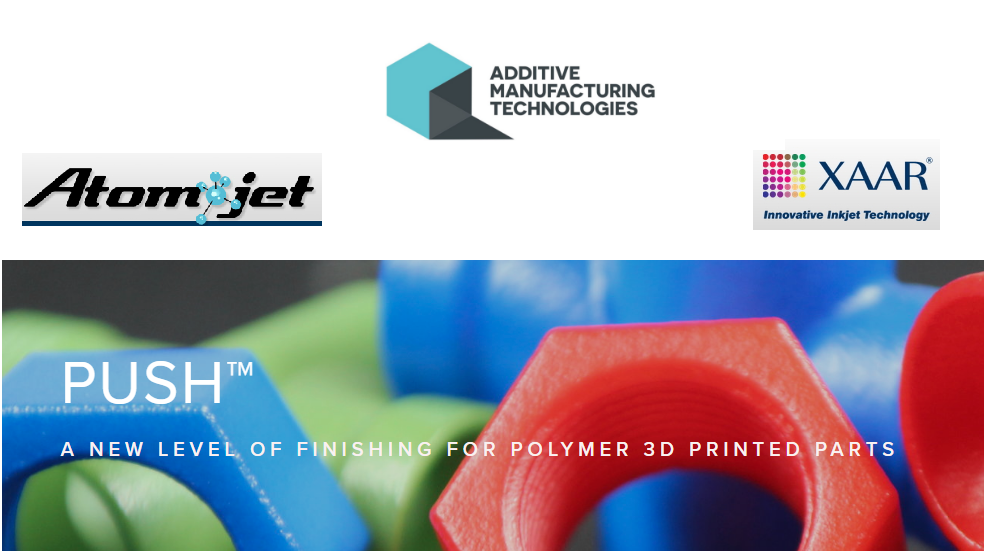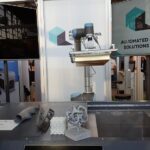

As noted by Additive Manufacturing Technologies Ltd (AMT), the post-processing market for 3D printed parts is estimated to grow to £450 million by 2020. We all know that 3D printing technology is shaking up the way objects are manufactured in many fields, and in 2014 the worldwide market for AM services and projects was worth about £3.3 billion, but people and industries aren’t always picking up and running with the technology as fast as we’d like to believe. One of the possible problems is the post-processing that’s necessary to finish many products: support material is often needed to hold objects together during the printing process, but the surface is usually rough, and not great for prototype testing. Post-processing involves removing these supports and undergoing a messy, time-consuming finishing process.
Manual post-processing slows down production rates and adds significant cost to the manufacturing process. Digital manufacturing could enjoy a significant increase if the post-processing problem can be solved, and believe me, people are trying to solve it. Last summer, industrial 3D printing company Rize introduced its Rize One desktop 3D printer, intended to completely eliminate the need for post-processing, and a few months after, Rize hired industry expert Todd Grimm to construct a detailed report on the impact of post-processing. PostProcess Technologies released their new Hybrid Series line of advanced, automated post-processing systems, and MakerBot released several helpful step-by-step guides if you just couldn’t get past needing post-processing techniques.
Now, Innovate UK, which accelerates sustainable economic growth in the UK by funding, connecting with, and supporting innovative businesses through a mix of programs and people, has awarded AMT £624,000, which is to be used to lead a consortium in a two-year project. The consortium’s goal is to develop and bring to market AMT’s automated, intelligent post-processing machine exclusively for 3D printed polymer parts. The award is co-funded between Innovate UK and the other consortium members, which include the UK’s leading industrial inkjet manufacturer Xaar plc, which we’ve written about before, and Atomjet Ltd, which designs and manufactures specialist technology machines. Atomjet was responsible for designing and building the first ever High Speed Sintering System.
The award will specifically enable AMT to work on developing the next generation of PostPro3D, the company’s patent-pending post-processing technology. The technology uses machine learning and smart algorithms, so manufacturers can add surface finishing to 3D printed parts developed for “aesthetically demanding products.” PostPro3D processes polymer printed parts using the proprietary PUSh Process, developed at the University of Sheffield and exclusively licensed to AMT.
“We see developing solutions for the post processing of 3D printed parts as key to helping 3D printing displace some forms of traditional manufacturing. It appears to us that this has been a poorly resourced area of the industry, hence our focus on all aspects of post processing,” Joseph Crabtree, CEO of AMT, tells 3DPrint.com.
“We have already developed our PostPro3D technology and the Innovate UK award will allow us to build our next generation intelligent machine that integrates into the digital manufacturing chain. PostPro3D addresses one aspect of the post processing chain, and in the coming months we will be announcing our other complementary technologies that the team has been working on.”

As the project kicks off, we are certainly looking forward to learning about these complementary technologies that are set to ease the process of post-processing. Each member of the consortium is set to bring unique knowledge to the table in this endeavor.
“We are delighted to join the consortium and bring our expertise to developing PostPro3D,” said Professor Neil Hopkinson, Director of 3D Printing at Xaarjet Ltd. “We see this project, in conjunction with High Speed Sintering, as an important step in the development and commercial delivery of industrial 3D Printing.”
The PUSh process works with thermoplastic polymer 3D printed parts, and underwent successful trials with Nylon 12, Nylon 11, TPU, TPE-210, and several other proprietary materials. It’s able to work on intricate structures and complex lattice features with no part-size restrictions, and is currently being developed, with a commercial partner, into a scalable automated manufacturing solution. Once PostPro3D is completely integrated into the digital manufacturing chain, the consortium says that for the first time, the technology will let 3D printing truly compete with, and displace, traditional methods of manufacturing. Using this process, the University of Sheffield was able to achieve a surface roughness Ra value of 3 microns for Nylon 12.
“We are excited to be involved with the project to develop the PostPro3D machine,” said Atomjet CEO Rob Harvey. “Our machine building skills are ideally suited to industrial digital manufacturing equipment.”
The unique PUSh process already received quite the endorsement in 2016, when the technology was used in the development of the high-tech Under Armour Architech training shoes. Now, with the Innovate UK award and the consortium’s help, AMT’s PostPro3D can go even further.
“The Innovate UK funding award is a significant step in the development of the proven PostPro3D technology which provides the ‘missing piece’ in the digital manufacturing chain,” said AMT’s Crabtree. “We are looking forward to working with OEM industrial partners to implement this technology into their 3D Printing digital factories.”
Innovate UK is investing up to £4.5 million in collaborative, industrial research projects that are dedicated solely to AM innovation; the Connected Digital Additive Manufacturing Innovate UK funding award is just one part of that investment. The overarching goal of the competition is to assist companies in overcoming barriers in AM business growth, and I would definitely call post-processing a barrier. The competition also encourages these companies to continue exploring and developing wider capabilities in digital manufacturing, as well as gaining more productive, competitive future business propositions. Discuss in the AMT forum at 3DPB.com.
If you're looking to get architectural 3D animation in the USA, our service provides an exceptional way to bring your architectural concepts to life through dynamic, immersive visuals. Through our platform, you can easily request high-quality 3D animations that showcase your designs in motion, offering a detailed view of your project from multiple angles and perspectives. Whether it's for a real estate development, a commercial building, or an urban planning project, our expert team ensures that every detail is captured in a visually compelling animation.
Through our website, you can seamlessly get architectural 3D animation tailored to your project’s specific needs. With our help, you can offer potential clients or investors an engaging experience that goes beyond static images. By integrating CGI animations with real-world settings, lighting, and textures, our team creates a lifelike experience that allows your audience to interact with your project as though it were already built. This service is perfect for presenting complex designs in a clear, visually attractive way that stands out in the competitive architectural market.




